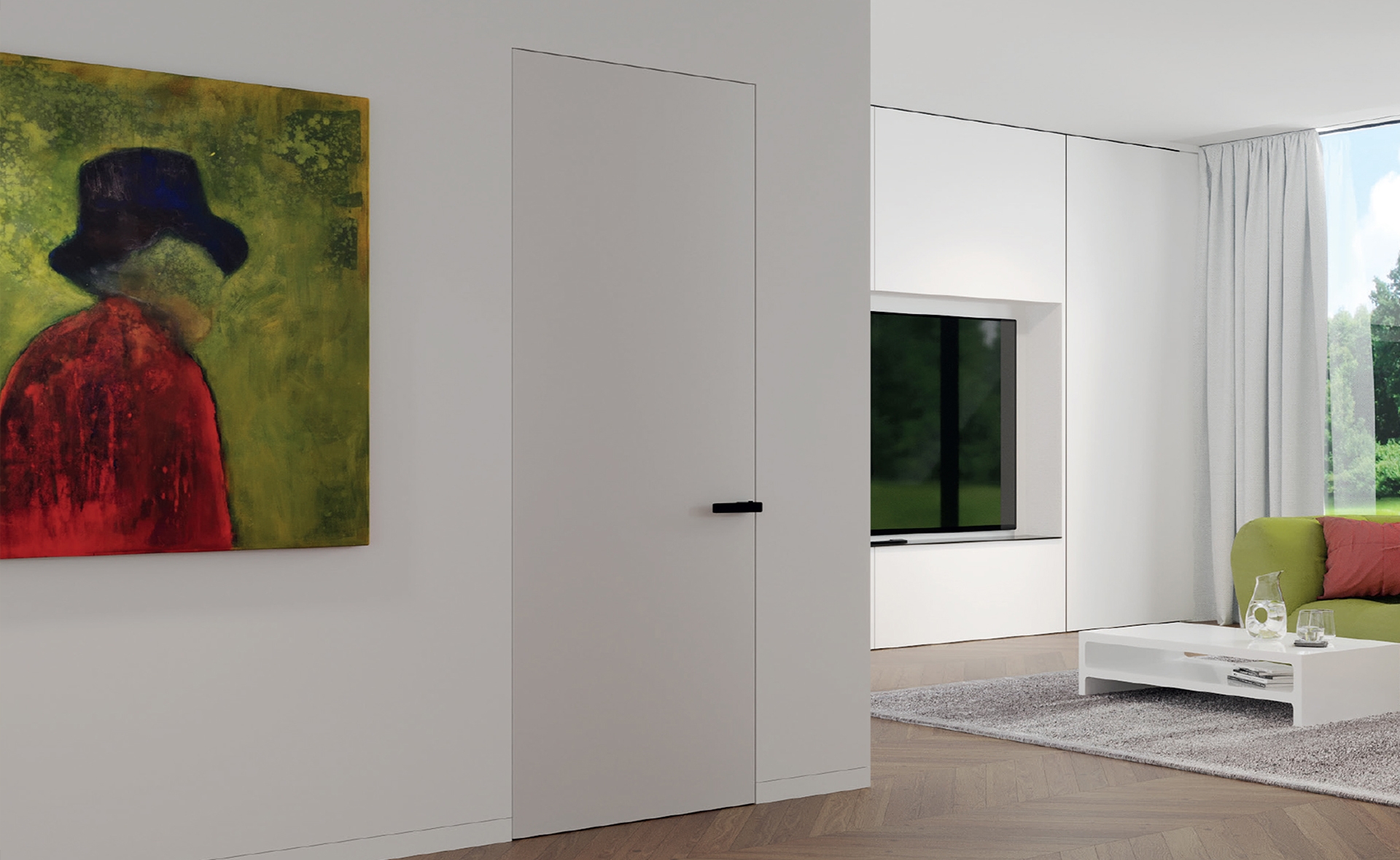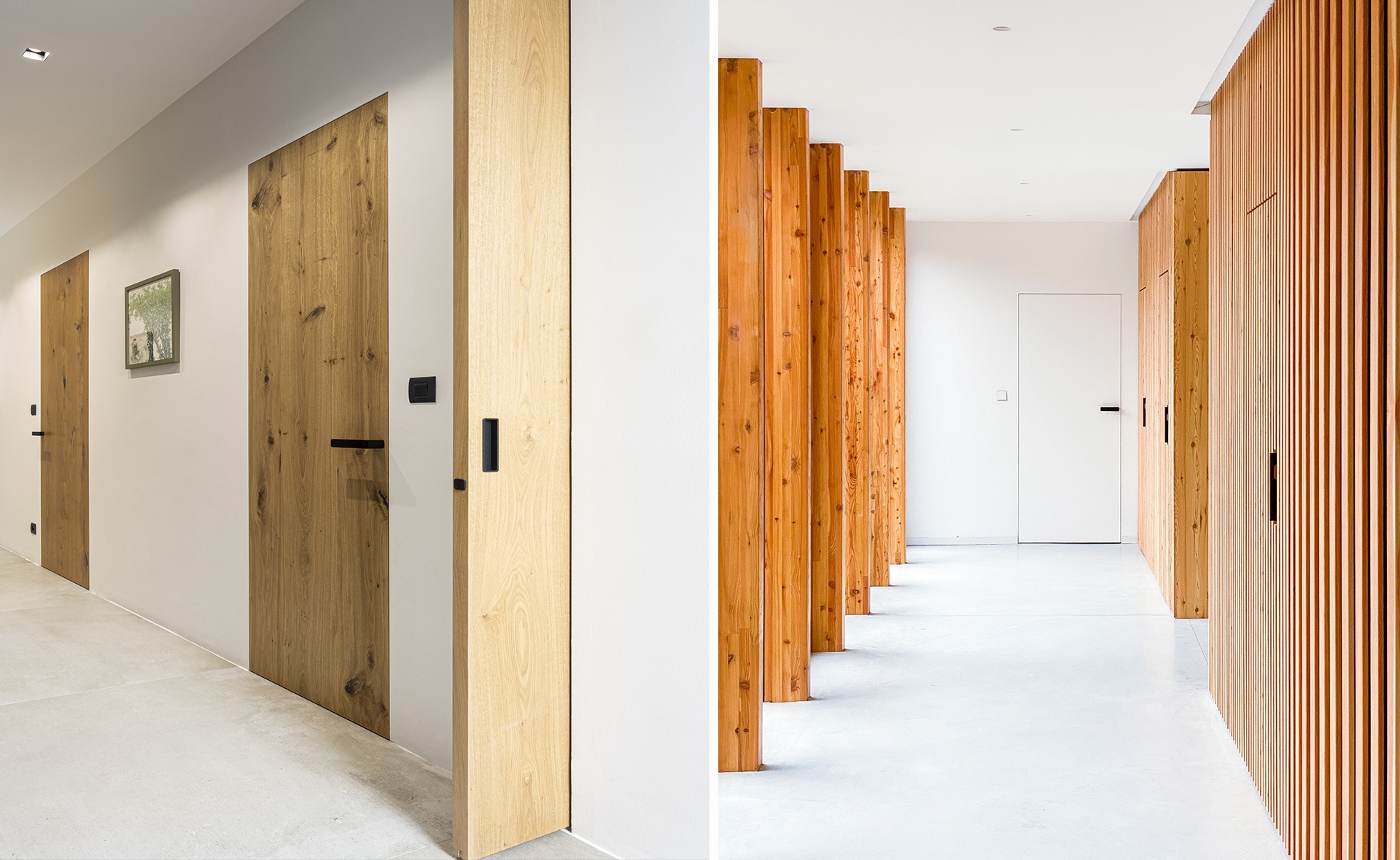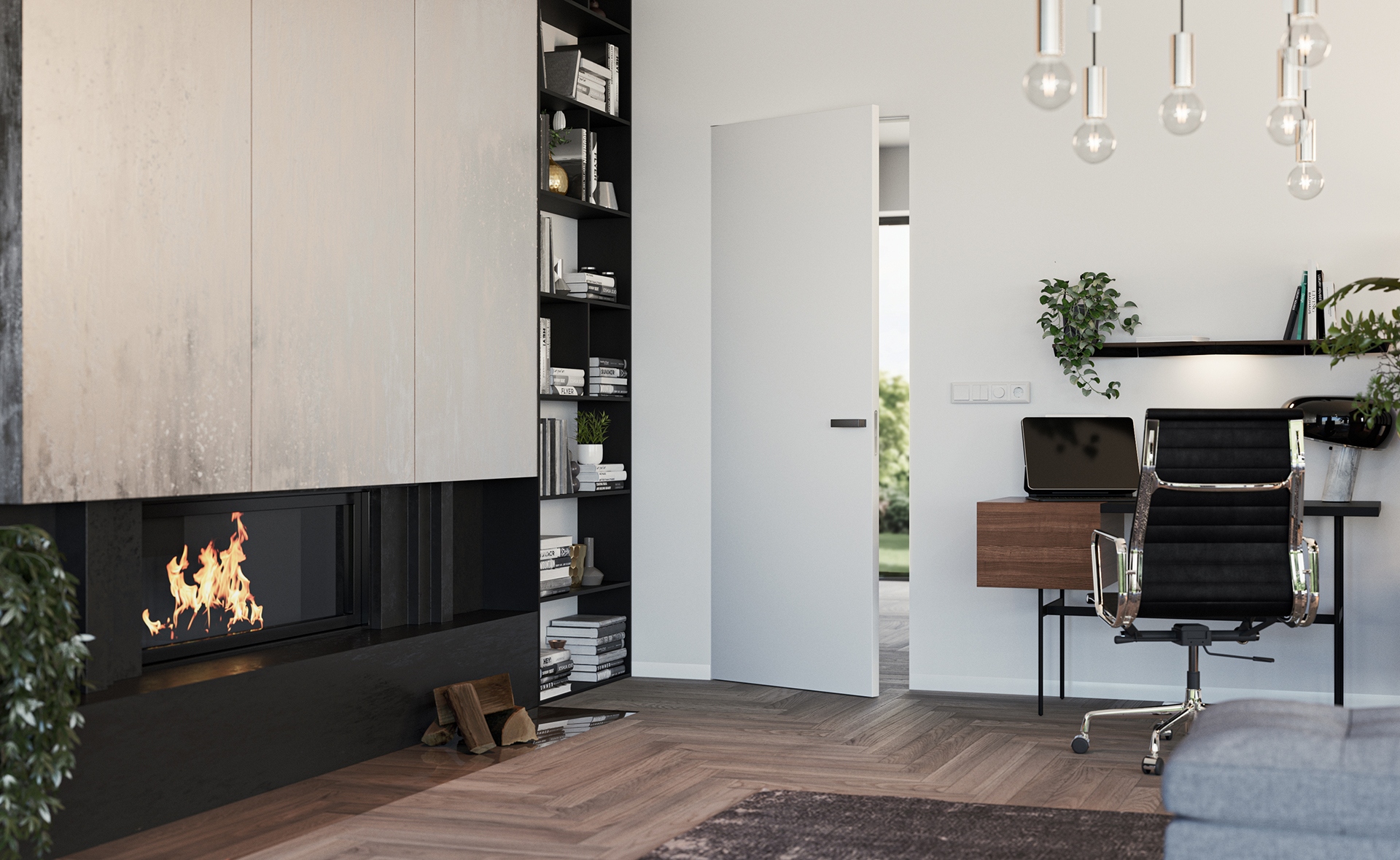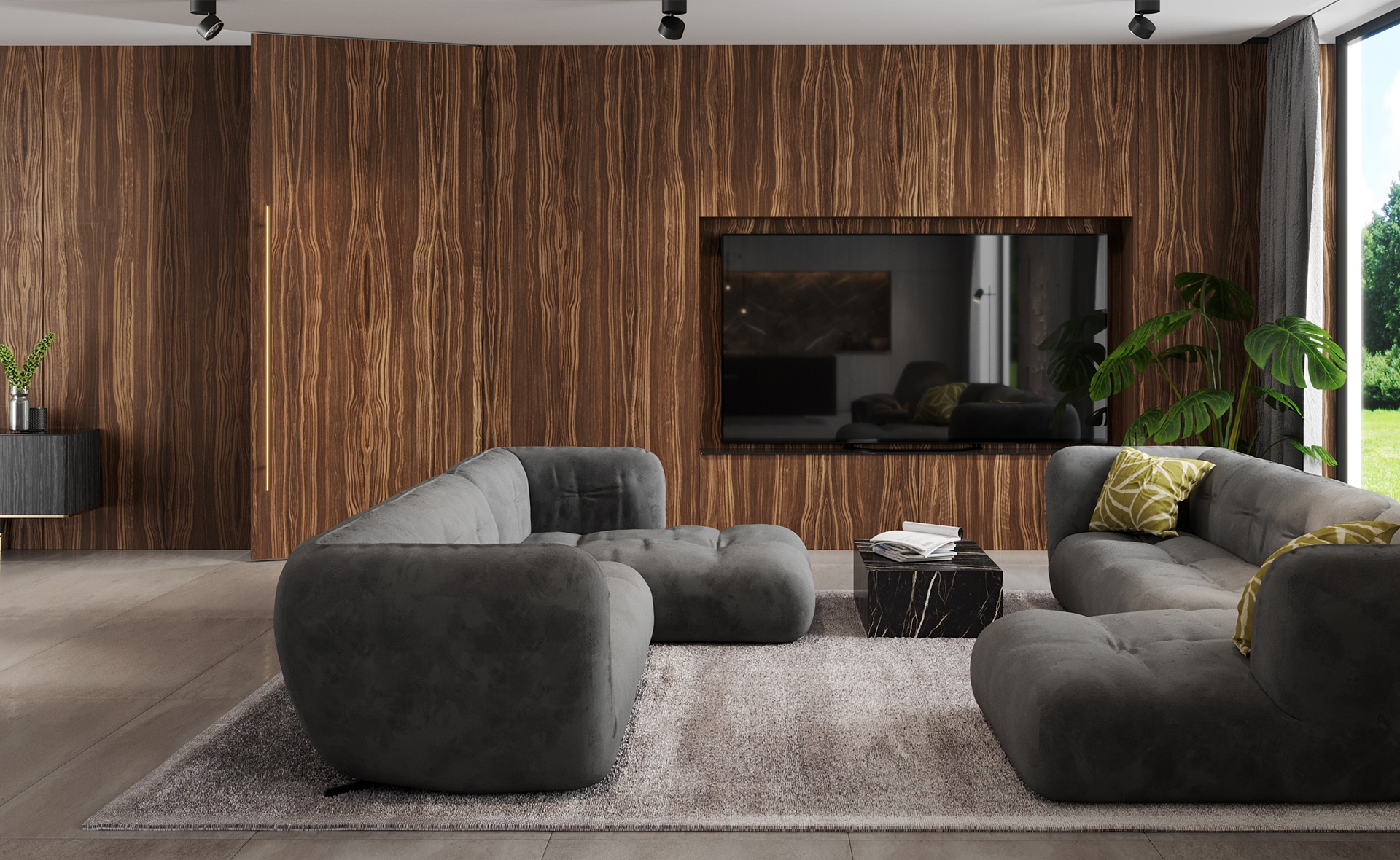
Hidden Door Frames: A Minimalist Element in the Evolution of Modern Interiors
 |
In the era of minimalism and clean lines, doors with hidden frames are one of the main stylistic elements that create the character of modern interior design. For architects, they represent more than just a transitional element between rooms – they are an essential design tool that ensures visual continuity of the space while offering a wide range of functional benefits.
Aesthetic Evolution of the Interior
In architecture today, we reduce visible structural elements in favor of clean, uninterrupted lines. Doors with hidden frames perfectly embody this concept. Traditional frames that have dominated door openings for decades are giving way to a more elegant solution where the frame and hinges disappear into the wall, leaving only a subtle gap between the door and the wall. |
| The frames are completely hidden – only a thin gap is visible, whether with white lacquered doors in the wall or with doors featuring wooden decors. |
"The essence of the success of doors with hidden frames is actually a paradox – their real quality lies in the fact that the final product in the room is not visible. The frame and hinges are completely hidden in the wall; only a thin gap between the door and the wall is visible," explains Jan Krejčí, managing director of Dorsis, a leading manufacturer of premium door systems.
For architects, this approach offers new possibilities in the conception of the interior. Doors can either seamlessly blend into the surrounding walls, or conversely, serve as a striking design element that is not disrupted by a visible frame. This flexibility allows architects to fully control the visual narrative of the space and determine the role doors play in the overall composition.
Technical Aspects and Innovations
"Quality hidden frame systems are not just an aesthetic element. They must meet demanding requirements for long-term functionality and allow for the integration of added technical elements that are often not possible with traditional doors," adds Jan Krejčí from Dorsis. |
| The variability of the Dorsis concept is crucial. Doors can extend to the ceiling, with a transom or slope, precisely tailored to the needs of a specific space. |
From the architect's point of view, it is essential that technical elements such as hidden closers, door stops, or hinges remain concealed and do not disrupt the purity of the design. This is a perfect example of how technological development can support design ambitions.
Functional Aspects Beyond Design
While aesthetics is one of the main reasons for choosing doors with hidden frames, their functional benefits are equally important. These systems offer a number of practical advantages:- Adaptability in space – hidden frames can adapt to non-standard architectural solutions with a maximum passage height of up to 3500mm and can be installed even in sloped attic rooms.
 |
| Dorsis Fortius 52 can be made with wooden veneer, white or colored finishes, with concrete coating, or even wallpapered, aiming to allow the door surface to blend with the surrounding wall. |
- Material and design variability – for architects, the ability to adapt doors to the overall concept of the interior is crucial. Dorsis door systems offer nearly unlimited variability in surface treatments, from natural veneers to colored sprays according to the RAL color chart, as well as options for cladding, wallpaper, or concrete coating.
- Functional variants – the most sought-after include the Fortius Akustik model, which offers acoustic comfort with an attenuation of Rw up to 37dB, and the Safety security variant. Thanks to these, we can install hidden frames throughout the apartment, ensuring design coherence throughout the interior.
 |
| The most popular surfaces for the Fortius 52 door leaf include natural veneers of all decors. |
Get Inspired and Seek Advice
If you are unsure which doors from Dorsis to choose, get inspired by our photo gallery or visit the Dorsis showroom directly. Doors with hidden frames represent a sophisticated product, and it is certainly advisable to seek advice on the ideal solution for your new home. You will then only need to choose the design of the door leaf – and that is surely the most interesting part, right?www.dorsis.cz
The English translation is powered by AI tool. Switch to Czech to view the original text source.
0 comments
add comment











